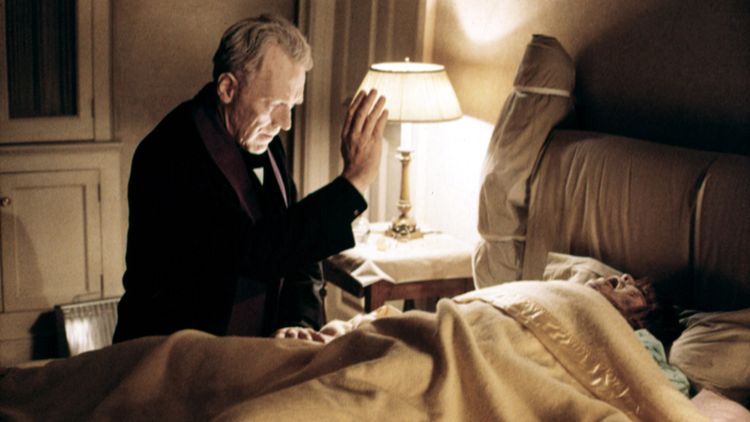Are Horror Films Republican? (Guest Column)

Next week’s hyper-contentious election and its face-off between virulently opposed camps has cast a fearful pall over our culture, creating an atmosphere where political terrors are outdoing the movie versions. Why hasn’t someone made a slasher pic about volunteers canvassing door-to-door at dusk?
This uneasy vibe has foregrounded an uncomfortable truth about horror films: how they often come with subtle political messages that are not always subtle enough to obscure which way they might vote in November. (To be clear, films cannot cast votes in a presidential election.) For example, you could easily argue that one of the most blatantly Republican horror movies was The Exorcist, along with the entire satanic-possession genre. In Friedkin’s 1972 original, science and modern medicine are completely powerless to dent the demon who has possessed the innocent victim, leaving it up to the patriarchal Catholic church to take on Pazuzu (and forge its own Reaganomics).
The very concept of supernatural evil is itself socially conservative, as illustrated by movies like The Blair Witch Project and The Ring, in which skeptical protagonists try to prove an occult legend false only to fall victim to its fatal reality. Likewise, the genre can have a hawkish bent. Take the common horror-and-action trope wherein ordinary efforts to neutralize some kind horrific phenomenon go nowhere and they have to pull out the big guns (the most famous examples being monster movies like King Kong, Godzilla, Them and Jaws, the script for which bore the influence of self-proclaimed “right-wing extremist” John Milius). And then there is the so-called queermongering sub-genre made famous by films like Psycho, Homicidal, Dressed To Kill, Silence of the Lambs and Basic Instinct featuring LGBTQ characters as killers, a 60-year-old strategy that still fits neatly into today’s MAGA platform.
Still, you can’t slash the whole genre with the same right-wing razor. For every horror film that relies on the tried-and-true menu of bogeymen and monsters, there’s at least one more with a more nuanced message. There are films where the horror is represented by society itself, terrorizing an individual — as seen in Invasion of the Body Snatchers, Night of the Living Dead, Rosemary’s Baby, Carrie, Get Out and Midsommar. And then there is the post-Jaws monster movie, where the macho act of pulling out the big guns doesn’t work — as evidenced by Alien, Independence Day, Cloverfield — and the monster has to be tackled by wits alone.
And even those films starring endlessly reincarnating supernatural psycho slashers chasing nubile coeds aren’t so simple to pigeonhole politically. As James Kendrick, an associate professor of film and digital media at Baylor University, pointed out, “In a lot of basic slasher films, the usual male-dominated support structures such as police or military often end up either ineffective or killed — you definitely don’t want to be the boyfriend or the cop in a slasher movie — which usually leaves the lone woman to save herself.”
And if there’s any ruling template for horror today, it’s the “final girl” story — as seen in the The Texas Chainsaw Massacre, the Halloween franchise, the Alien franchise, the Scream franchise, the Resident Evil franchise, The Descent, Happy Death Day and of course The Final Girls — along with too many others to list. It’s hard to say exactly what their politics would be, but, statistically speaking, they’d likely be voting for Kamala Harris.

















































